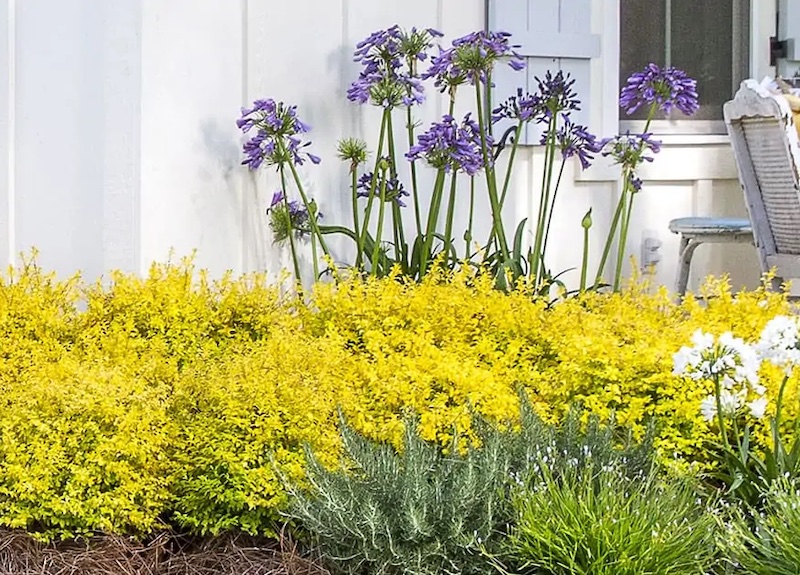Common Agapanthus Issues and Just How to Solve Them
Wiki Article
Mastering the Art of Agapanthus Care: Necessary Steps for Healthy Development and Dynamic Blossoms
In the world of cultivation, the cultivation of agapanthus stands as a fulfilling venture for those who look for to support these sophisticated blooming plants. With their striking flowers and elegant foliage, agapanthus has actually caught the attention of garden enthusiasts worldwide. However, accomplishing optimal growth and vivid blooms needs a nuanced strategy that incorporates numerous essential actions. From selecting the appropriate variety to mastering pruning techniques, the journey in the direction of growing flourishing agapanthus plants is multifaceted and holds the vital to unlocking the complete possibility of these herb gems.
Picking the Right Agapanthus Variety

When selecting the best Agapanthus selection for your yard, take into consideration aspects such as climate suitability, bloom color, and development habit. In addition, take into consideration the climate in your area to make certain the Agapanthus selection you select can grow in your particular problems. Comprehending the development habit of various Agapanthus varieties is vital for proper positioning within your garden.
Perfect Planting Problems
Taking into consideration the optimum ecological requirements is important for effective Agapanthus growing. Agapanthus plants are sensitive to cool temperature levels and need to be protected from frost during winter months.To guarantee healthy and balanced growth and vivid blossoms, plant Agapanthus bulbs at a deepness of concerning 2-4 inches and room them 8-12 inches apart. Adding raw material, such as garden compost, to the soil can enhance drainage and fertility, promoting durable root growth. Mulching around the base of the plants assists retain wetness and reduces weed growth. Routine watering is crucial, particularly during the expanding period, to maintain the soil continually moist however not soaked.
Watering and Feeding Tips
Keeping proper dampness levels and providing necessary nutrients are crucial elements in the care regimen for Agapanthus plants. When it concerns sprinkling Agapanthus, it is essential to strike an equilibrium. If overwatered, these plants like regularly damp soil yet are prone to root rot. Throughout the expanding period, water deeply when a week, ensuring the soil is well-draining to avoid waterlogging. In hotter environments or throughout durations of drought, even more constant watering may be required to keep the soil evenly wet. Nevertheless, decrease watering in the winter season to stop waterlogged conditions.Feeding Agapanthus is crucial for advertising healthy growth and respected flowers. Use a balanced plant food, such as a 10-10-10 formula, in the very early spring as new growth arises. By following these watering and fertilizing suggestions, you can guarantee your Agapanthus plants prosper and create vivid, long-lasting flowers.
Pruning Methods for Agapanthus
Trimming Agapanthus plants at the proper times and with proper techniques is critical for preserving their health and promoting optimal development and blooming. The optimal time to trim Agapanthus is in late winter or early springtime before new development emerges.For flowered stems, wait until the blooms have perished and then cut them back to the base. This not just tidies up the plant's look but additionally motivates the development of new blossom buds. Deadheading spent flowers can likewise reroute the plant's energy right into producing even more blossoms rather than establishing seeds. However, if you wish to gather seeds for propagation, leave some flowers to completely dry and fully grown on the plant.
Remember to make use of tidy, sharp devices to make precise cuts and reduce the threat of presenting conditions. Agapanthus. Regular trimming will help keep your Agapanthus looking healthy and cool while making sure a bountiful screen of attractive blooms
Taking Care Of Usual Pests and Diseases
After guaranteeing appropriate pruning techniques go to this site for Agapanthus, it is necessary to attend to common insects and diseases that can influence the health and wellness and vigor of these plants. One usual parasite that impacts Agapanthus is the Agapanthus gall midge.One more typical concern is fungal fallen leave spot, which offers as dark lesions on the fallen leaves. To prevent fungal diseases, ensure good air circulation around the plants, avoid above watering, Full Article and remove any type of infected leaves without delay. Additionally, Agapanthus plants can struggle with origin rot if they are planted in badly draining dirt. To prevent this, plant Agapanthus in well-draining soil and prevent overwatering. By being watchful and taking prompt action versus diseases and bugs, you can aid your Agapanthus plants grow and produce vibrant flowers.

Verdict
In conclusion, grasping the art of agapanthus care entails choosing the appropriate selection, giving suitable growing problems, correct watering and feeding, proper trimming strategies, and attending to usual bugs and diseases. By following these essential actions, you can guarantee healthy and balanced growth and dynamic blooms for your agapanthus plants. Bear in mind to regularly check and maintain your plants to promote their overall health and durability.To make sure healthy and balanced growth and vivid flowers, plant Agapanthus bulbs at a deepness of about 2-4 inches and area them 8-12 inches apart. By following these watering and feeding ideas, you can guarantee your Agapanthus plants flourish and produce vibrant, long-lasting flowers.
One usual bug that impacts Agapanthus is the Agapanthus gall midge. Furthermore, Agapanthus plants can suffer from origin rot if they are planted in poorly draining dirt. By adhering to these important steps, you can make sure healthy and find more information balanced growth and vivid flowers for your agapanthus plants.
Report this wiki page